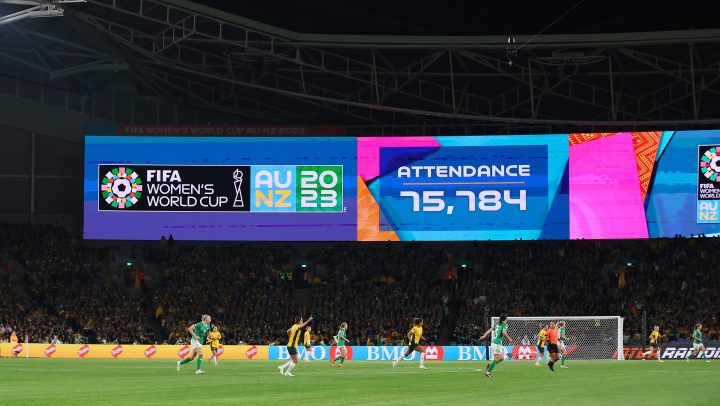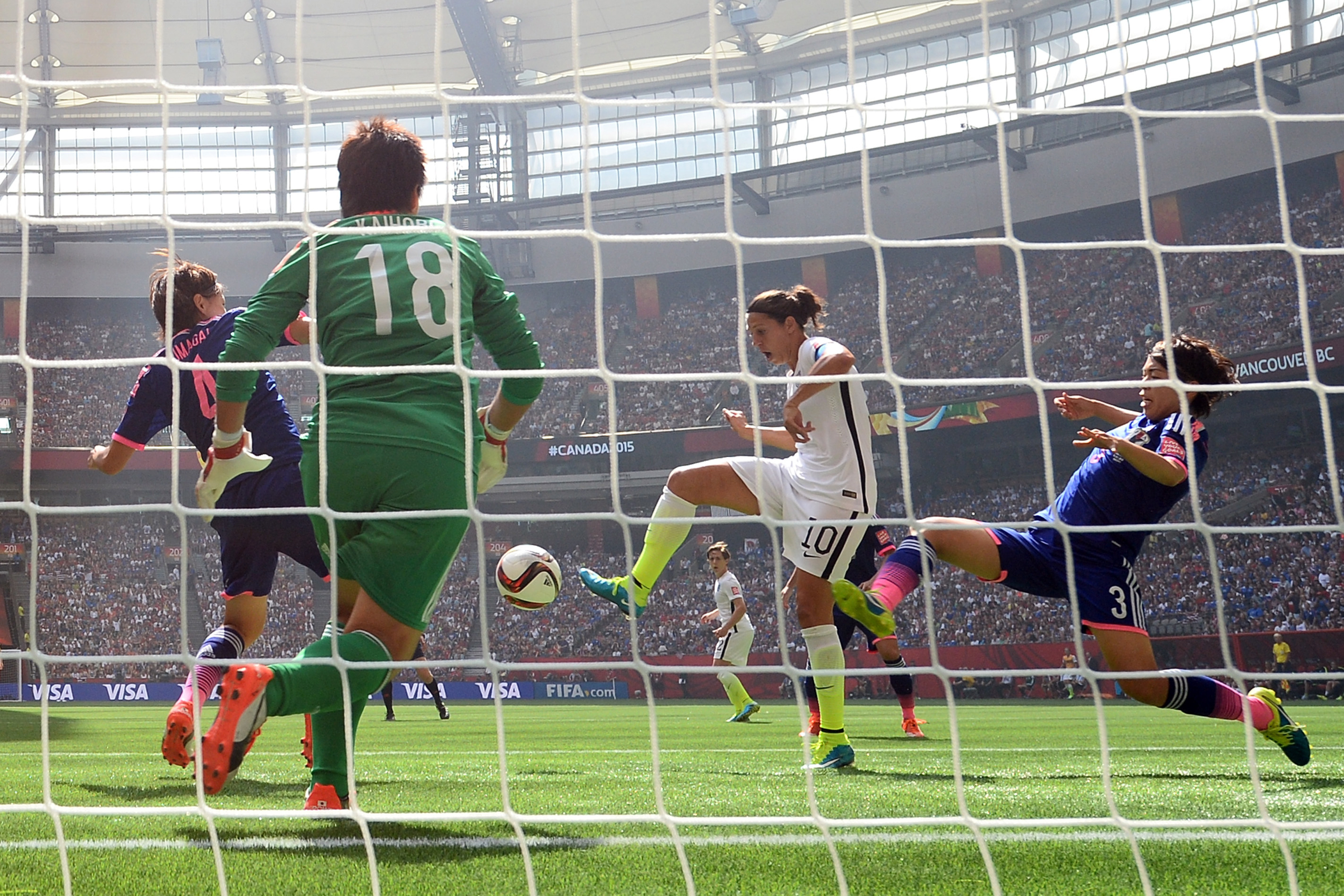
Women’s World Cup: More teams, more money

The biggest women’s sports event on the planet kicked off Thursday in host countries Australia and New Zealand: the quadrennial Women’s World Cup of soccer. The United States team is aiming for a fifth world championship and an unprecedented three-peat — a third consecutive championship after winning in 2015 and 2019. The U.S. women play their first match in the monthlong competition Friday against Vietnam.
This year’s Women’s World Cup is bigger than it’s ever been. It features more teams — 32, up from 24 — likely to be playing in front of bigger crowds and watched by bigger audiences around the world on screens large and small.
More money will also be flowing — in the form of marketing and sponsorship deals — as well as newly pumped-up broadcast rights.
On July 9, the U.S. Women’s National Team played a “friendly” against Wales, which is an exhibition warm-up match for the World Cup. The buzz for the main event was already building at the Sports Bra — a women’s sports bar in Portland, Oregon.
“Clearly we’re already full. There’s a list going and people are waiting,” said founder and owner Jenny Nguyen, speaking outside the bar as sidewalk picnic tables rapidly filled up with bargoers who flocked to watch the early-afternoon match. “That’s pretty common for us on a game day.”

The beer was flowing, the match was playing on five big screens inside and it was hard to miss the enthusiasm for women’s soccer.
“The fan base is very, very large for women’s sports,” Nguyen said, “and now people are saying, ‘If you put it on TV, people will watch it.’”
A.J. Griffin had joined the crowd in a jersey featuring the Portland Thorns, the local pro team in the U.S. National Women’s Soccer League. Griffin used to play soccer competitively, but now, she said, she more often watches.
“On a competitive level, you can see it in all the games, they’re incredibly talented players,” said Griffin. “I really think that if people just gave it a chance — started watching it more — that it would elevate the game.”
More watching of women’s soccer — and women’s sports overall — is happening, according to Ellen Staurowsky, professor of sports media at Ithaca College.
“We do see far more women’s sports than we ever have before,” she said. “But at the same time, women are still just getting less than 1% of sport marketing dollars globally. What is it going to take financially, in terms of media coverage, to actually see women’s sports at 20%? At 25%?”
Women’s soccer has just taken one small step in that direction. This year for the first time, soccer’s global sanctioning body, FIFA, negotiated the women’s broadcast rights separately from the men’s.
In the past, FIFA offered broadcasters both for one fee — and the men’s game got the lion’s share of the money, Staurowsky said. What’s more: “To approach marketing and broadcasting of women’s events as being add-ons of men’s sports, rather than as the main event, the industry has actually been leaving money on the table.”
FIFA hasn’t disclosed how much broadcasters paid for the Women’s World Cup, but media analyst Paul Verna at Insider Intelligence considers that “it’s still fractional compared to what they get for the Men’s World Cup.”
The boost in revenue will be important in part because of its timing, said sports economist Dennis Coates at the University of Maryland, Baltimore County, who authored a chapter on soccer in “Handbook on the Economics of Women in Sports.”
“Every four years, there is lots of interest in watching the Women’s World Cup matches,” Coates said. “But once the World Cup is past, television audiences drop like the proverbial rock. And since this is the biggest, most prominent way that the women’s sport generates revenue — the broadcasting contracts — they need to get as much as they can to hold them over for the lean times when it’s not a World Cup year.”
And the new broadcast revenue, along with the precedent of selling women’s tournament rights separately, will make a difference, said Richard Motzkin. He’s managing executive of the global soccer group at sports marketing agency Wasserman, which represents nearly a dozen U.S. World Cup players.
“Investment has improved, both in terms of the sheer number of companies who are putting money behind the female soccer players, but also in terms of what they’re being compensated,” Motzkin said. “Now, you’ve got the broadcasters putting a lot more time and attention behind the tournament. You see resources and investments being committed by top European clubs to their women’s teams, by the federations to their national teams.”
But soccer still faces a big gender gap, said Paul Verna at Insider Intelligence. “The women just are not anywhere on the same level in terms of the licensing revenue for the broadcast rights as the men,” said Verna. “In fact, they’re orders of magnitude below.”
Just compare what the U.S. pro soccer leagues get for their games, he continued: “Apple just paid $250 million a year for 10 years for the rights to the MLS — Major League Soccer, the men’s league. The women’s rights, the last time they were negotiated, which was only three years ago, went for $1.5 million. So that’s a multiple of 166.”
It means fewer women’s matches on TV with fewer bells and whistles, said Ellen Staurowsky at Ithaca College. “If we’re not broadcasting all of the games, if the quality of those broadcasts is not up to par to create excitement, there is no way that we’re going to have an audience that’s going to be following it, right?”
She said that means it’ll take even longer to boost pay and improve facilities and training to reach par with the men.
There’s a lot happening in the world. Through it all, Marketplace is here for you.
You rely on Marketplace to break down the world’s events and tell you how it affects you in a fact-based, approachable way. We rely on your financial support to keep making that possible.
Your donation today powers the independent journalism that you rely on. For just $5/month, you can help sustain Marketplace so we can keep reporting on the things that matter to you.

















